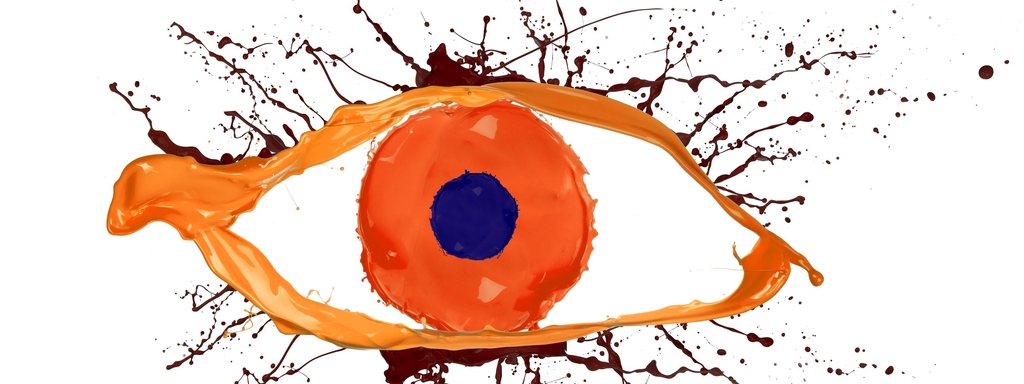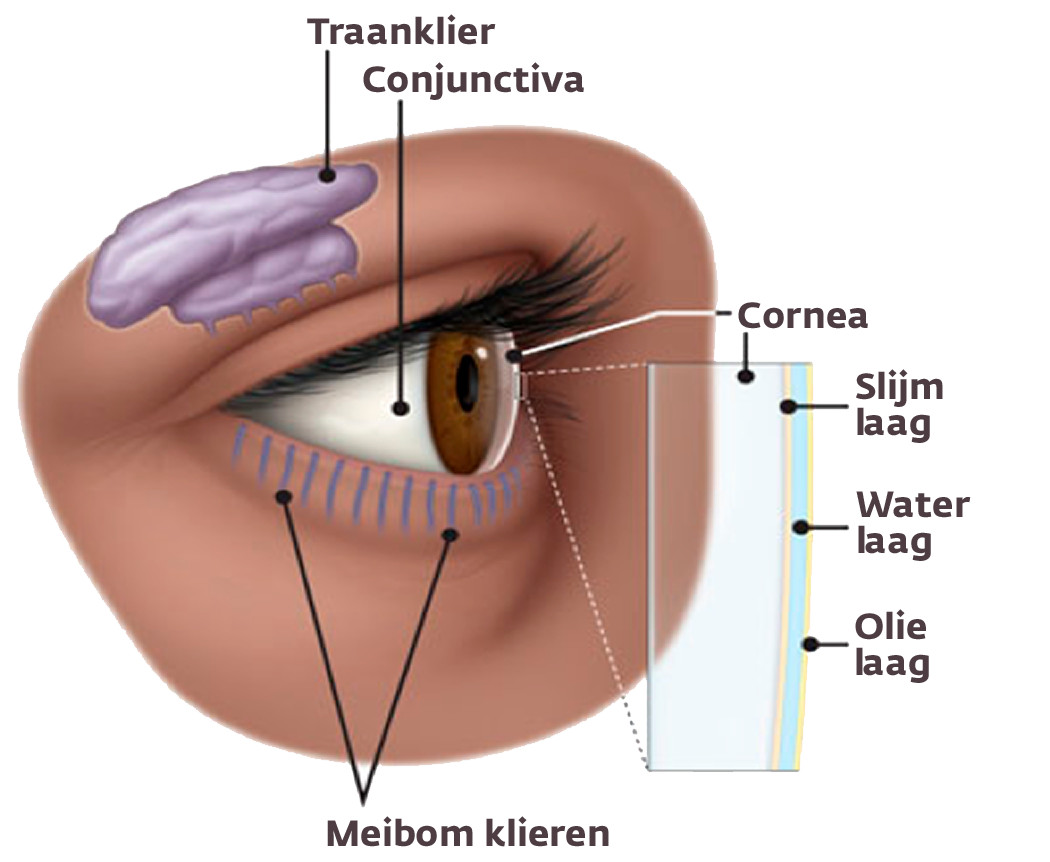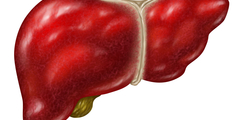
Veel mensen (vooral vrouwen en ouderen) hebben last van droge ogen. Dit geldt voor circa 6% van de mensen vanaf 40 jaar en 15% van de mensen boven 65 jaar. Verschillende natuurlijke ontstekingsremmers en antioxidanten kunnen klachten van droge ogen verlichten.
Beste bezoeker, u heeft geen toegang.
Enkel (web)abonnees hebben toegang tot tijdschriftartikelen. Het webabonnement is nog in de maak.
U kunt zich wel alvast (gratis) registreren en tal van andere webartikelen raadplegen!
Auteur
Verschenen in
Referenties
Nakano T et al. Blink-related momentary activation of the default mode network while viewing videos. Proc Natl Acad Sci. USA. 2013;110(2):702-6.
The definition and classification of dry eye disease: report of the Definition and Classification Subcommittee of the International Dry Eye WorkShop Ocul Surf. 2007;5(2):75-92.
http://www.oogartsen.nl/oogartsen/overige_oogziekten/droge_ogen/
Wilson SE. Inflammation: a unifying theory for the origin of dry eye syndrome. Manag Care 2003;12(Suppl):14–9.
Askeroglu U et al. Pharmaceutical and herbal products that may contribute to dry eyes. Plast Reconstr Surg. 2013;131(1):159-67.
Alves M et al. Dry eye disease caused by viral infection: review. Arq Bras Oftalmol. 2013;76(2):129-32.
Abe T et al. Decreased tear lactoferrin concentration in patients with chronic hepatitis C. Br J Ophthalmol 1999;83:684–687.
Wei Y et al. The core mechanism of dry eye disease is inflammation. Eye Contact Lens. 2014;40(4):248-56.
Luo L et al. Experimental dry eye stimulates production of inflammatory cytokines and MMP-9 and activates MAPK signaling pathways on the ocular surface. Invest Ophthalmol Vis Sci 2004;45:4293-301.
Preedy VR ed. Handbook of nutrition, diet, and the eye. Elsevier, 2014;169-175. ISBN: 9780124017177.
Dogru M et al. Lactoferrin in Sjögren's syndrome. Ophthalmol. 2007;114(12):2366-7.
Zheng Q et al. Reactive oxygen species activated NLRP3 inflammasomes initiate inflammation in hyperosmolarity stressed human corneal epithelial cells and environment-induced dry eye patients. Exp Eye Res. 2015;134:133-40.
Abengózar-Vela A et al. Quercetin and resveratrol decrease the inflammatory and oxidative responses in human ocular surface epithelial cells. Invest Ophthalmol Vis Sci. 2015;56(4):2709-19.
Baudouin C et al. Role of hyperosmolarity in the pathogenesis and management of dry eye disease: proceedings of the OCEAN group meeting. Ocul Surf. 2013;11:246-258.
Miljanovic B et al. Relation between dietary n-3 and n-6 fatty acids and clinically diagnosed dry eye syndrome in women. Am J Clin Nutr. 2005;82:887-893.
Walter SD et al. ω-3 tear film lipids correlate with clinical measures of dry eye. Invest Ophthalmol Vis Sci. 2016;57(6):2472-8.
Liu A et al. Omega-3 essential fatty acids therapy for dry eye syndrome: a meta-analysis of randomized controlled studies. Med Si Monit. 2014;20:1583-1589.
Macsai MS. The role of omega-3 dietary supplementation in blepharitis and meibomian gland dysfunction (an aos thesis). Trans Am Ophthal Soc. 2008;106:336-356.
Andrade AS et al. Alpha-lipoic acid restores tear production in an animal model of dry eye. Exp Eye Res. 2014;120:1-9.
Li Z et al. Effects of eye drops containing a mixture of omega-3 essential fatty acids and hyaluronic acid on the ocular surface in desiccating stress-induced murine dry eye. Curr Eye Res. 2014;39(9):871-8.
Rashid S et al. Rachid S et al. Topical omega-3 and omega-6 fatty acids for treatment of dry eye. Arch Ophthalmol. 2008;126(2):219-25.
Erdinest N et al. Anti-inflammatory effects of alpha linolenic acid on human corneal epithelial cells. Invest Ophthalmol Vis Sci. 2012;53(8):4396-406.
Kohli P et al. Resolvins and protectins: mediating solutions to inflammation. Br J Pharmacol. 2009;158(4):960-971.
Viau S et al. Efficacy of a 2-month dietary supplementation with polyunsaturated fatty acids in dry eye induced by scopolamine in a rat model. Graefes Arch Clin Exp Ophthalmol. 2009;247(8):1039-50.
Gaby AR. Nutritional therapies for ocular disorders: part three. Altern Med Rev. 2008;13(3):191-204.
Flanagan JL et al. Role of lactoferrin in the tear film. Biochimie. 2009;91(1):35-43.
Devendra J et al. Effect of oral lactoferrin on cataract surgery induced dry eye: a randomised controlled trial. J Clin Diagn Res. 2015;9(10):NC06-9.
Careba I et al. Tear lipocalin, lysozyme and lactoferrin concentrations in postmenopausal women.J Med Life. 2015;8 Spec Issue:94-8.
Williams JE. Portal to the interior: viral pathogenesis and natural compounds that restore mucosal immunity and modulate inflammation. Alt. Med Rev. 2003;8(4):395-409.
Ubels JL et al. Vitamin A is present as retinol in the tears of humans and rabbits. Curr Eye Res 1984;3:815-22.
Nakamura S et al. Delphinidin 3,5-O-diglucoside, a constituent of the maqui berry (Aristotelia chilensis) anthocyanin, restores tear secretion in a rat dry eye model. J Functional Foods 2014;10:346-354.
Hitoe S et al. MaquiBright™ standardized maqui berry extract significantly increases tear fluid production and ameliorates dry eye-related symptoms in a clinical pilot trial. Panminerva Med. 2014;56(3 Suppl 1):1-6.
Chen M et al. Curcumin protects against hyperosmoticity-induced IL-1beta elevation in human corneal epithelial cell via MAPK pathways. Exp Eye Res. 2010;90:437-443.
Higuchi A et al. Selenium compound protects corneal epithelium against oxidative stress. PLoS One 2012;7:9:e45612.
Huang JY et al. A randomized, double-blind, placebo-controlled study of oral antioxidant supplement therapy in patients with dry eye syndrome. Clin Ophthalmol. 2016;10:813-20.
Galbis-Estrada C et al. A metabolomic approach to dry eye disorders. The role of oral supplements with antioxidants and omega 3 fatty acids. Mol Vis. 2015;21:555-67.
Drouault-Holowacz S et al. Antioxidants intake and dry eye syndrome: a crossover, placebo-controlled, randomized trial. Eur J Ophthalmol. 2009;19(3):337-42.
Oleñik A. Effectiveness and tolerability of dietary supplementation with a combination of omega-3 polyunsaturated fatty acids and antioxidants in the treatment of dry eye symptoms: results of a prospective study. Clin Ophthalmol. 2014;8:169-76.
Blades KJ et al. Oral antioxidant therapy for marginal dry eye. Eur J Clin Nutr. 2001;55:589-597.
Gatell-Tortajada J. Oral supplementation with a nutraceutical formulation containing omega-3 fatty acids, vitamins, minerals, and antioxidants in a large series of patients with dry eye symptoms: results of a prospective study. Clin Interv Aging. 2016;11:571-8
1. Nakano T et al. Blink-related momentary activation of the default mode network while viewing videos. Proc Natl Acad Sci. USA. 2013;110(2):702-6.
2. The definition and classification of dry eye disease: report of the Definition and Classification Subcommittee of the International Dry Eye WorkShop Ocul Surf. 2007;5(2):75-92.
3. http://www.oogartsen.nl/oogartsen/overige_oogziekten/droge_ogen/
4. Wilson SE. Inflammation: a unifying theory for the origin of dry eye syndrome. Manag Care 2003;12(Suppl):14–9.
5. Askeroglu U et al. Pharmaceutical and herbal products that may contribute to dry eyes. Plast Reconstr Surg. 2013;131(1):159-67.
6. Alves M et al. Dry eye disease caused by viral infection: review. Arq Bras Oftalmol. 2013;76(2):129-32.
7. Abe T et al. Decreased tear lactoferrin concentration in patients with chronic hepatitis C. Br J Ophthalmol 1999;83:684–687.
8. Wei Y et al. The core mechanism of dry eye disease is inflammation. Eye Contact Lens. 2014;40(4):248-56.
9. Luo L et al. Experimental dry eye stimulates production of inflammatory cytokines and MMP-9 and activates MAPK signaling pathways on the ocular surface. Invest Ophthalmol Vis Sci 2004;45:4293-301.
10. Preedy VR ed. Handbook of nutrition, diet, and the eye. Elsevier, 2014;169-175. ISBN: 9780124017177.
11. Dogru M et al. Lactoferrin in Sjögren's syndrome. Ophthalmol. 2007;114(12):2366-7.
12. Zheng Q et al. Reactive oxygen species activated NLRP3 inflammasomes initiate inflammation in hyperosmolarity stressed human corneal epithelial cells and environment-induced dry eye patients. Exp Eye Res. 2015;134:133-40.
13. Abengózar-Vela A et al. Quercetin and resveratrol decrease the inflammatory and oxidative responses in human ocular surface epithelial cells. Invest Ophthalmol Vis Sci. 2015;56(4):2709-19.
14. Baudouin C et al. Role of hyperosmolarity in the pathogenesis and management of dry eye disease: proceedings of the OCEAN group meeting. Ocul Surf. 2013;11:246-258.
15. Miljanovic B et al. Relation between dietary n-3 and n-6 fatty acids and clinically diagnosed dry eye syndrome in women. Am J Clin Nutr. 2005;82:887-893.
16. Walter SD et al. ω-3 tear film lipids correlate with clinical measures of dry eye. Invest Ophthalmol Vis Sci. 2016;57(6):2472-8.
17. Liu A et al. Omega-3 essential fatty acids therapy for dry eye syndrome: a meta-analysis of randomized controlled studies. Med Si Monit. 2014;20:1583-1589.
18. Macsai MS. The role of omega-3 dietary supplementation in blepharitis and meibomian gland dysfunction (an aos thesis). Trans Am Ophthal Soc. 2008;106:336-356.
19. Andrade AS et al. Alpha-lipoic acid restores tear production in an animal model of dry eye. Exp Eye Res. 2014;120:1-9.
20. Li Z et al. Effects of eye drops containing a mixture of omega-3 essential fatty acids and hyaluronic acid on the ocular surface in desiccating stress-induced murine dry eye. Curr Eye Res. 2014;39(9):871-8.
21. Rashid S et al. Rachid S et al. Topical omega-3 and omega-6 fatty acids for treatment of dry eye. Arch Ophthalmol. 2008;126(2):219-25.
22. Erdinest N et al. Anti-inflammatory effects of alpha linolenic acid on human corneal epithelial cells. Invest Ophthalmol Vis Sci. 2012;53(8):4396-406.
23. Kohli P et al. Resolvins and protectins: mediating solutions to inflammation. Br J Pharmacol. 2009;158(4):960-971.
24. Viau S et al. Efficacy of a 2-month dietary supplementation with polyunsaturated fatty acids in dry eye induced by scopolamine in a rat model. Graefes Arch Clin Exp Ophthalmol. 2009;247(8):1039-50.
25. Gaby AR. Nutritional therapies for ocular disorders: part three. Altern Med Rev. 2008;13(3):191-204.
26. Flanagan JL et al. Role of lactoferrin in the tear film. Biochimie. 2009;91(1):35-43.
27. Devendra J et al. Effect of oral lactoferrin on cataract surgery induced dry eye: a randomised controlled trial. J Clin Diagn Res. 2015;9(10):NC06-9.
28. Careba I et al. Tear lipocalin, lysozyme and lactoferrin concentrations in postmenopausal women. J Med Life. 2015;8 Spec Issue:94-8.
29. Williams JE. Portal to the interior: viral pathogenesis and natural compounds that restore mucosal immunity and modulate inflammation. Alt. Med Rev. 2003;8(4):395-409.
30. Ubels JL et al. Vitamin A is present as retinol in the tears of humans and rabbits. Curr Eye Res 1984;3:815-22.
31. Nakamura S et al. Delphinidin 3,5-O-diglucoside, a constituent of the maqui berry (Aristotelia chilensis) anthocyanin, restores tear secretion in a rat dry eye model. J Functional Foods 2014;10:346-354.
32. Hitoe S et al. MaquiBright™ standardized maqui berry extract significantly increases tear fluid production and ameliorates dry eye-related symptoms in a clinical pilot trial. Panminerva Med. 2014;56(3 Suppl 1):1-6.
33. Chen M et al. Curcumin protects against hyperosmoticity-induced IL-1beta elevation in human corneal epithelial cell via MAPK pathways. Exp Eye Res. 2010;90:437-443.
34. Higuchi A et al. Selenium compound protects corneal epithelium against oxidative stress. PLoS One 2012;7:9:e45612.
35. Huang JY et al. A randomized, double-blind, placebo-controlled study of oral antioxidant supplement therapy in patients with dry eye syndrome. Clin Ophthalmol. 2016;10:813-20.
36. Galbis-Estrada C et al. A metabolomic approach to dry eye disorders. The role of oral supplements with antioxidants and omega 3 fatty acids. Mol Vis. 2015;21:555-67.
37. Drouault-Holowacz S et al. Antioxidants intake and dry eye syndrome: a crossover, placebo-controlled, randomized trial. Eur J Ophthalmol. 2009;19(3):337-42.
38. Oleñik A. Effectiveness and tolerability of dietary supplementation with a combination of omega-3 polyunsaturated fatty acids and antioxidants in the treatment of dry eye symptoms: results of a prospective study. Clin Ophthalmol. 2014;8:169-76.
39. Blades KJ et al. Oral antioxidant therapy for marginal dry eye. Eur J Clin Nutr. 2001;55:589-597.
40. Gatell-Tortajada J. Oral supplementation with a nutraceutical formulation containing omega-3 fatty acids, vitamins, minerals, and antioxidants in a large series of patients with dry eye symptoms: results of a prospective study. Clin Interv Aging. 2016;11:571-8.






